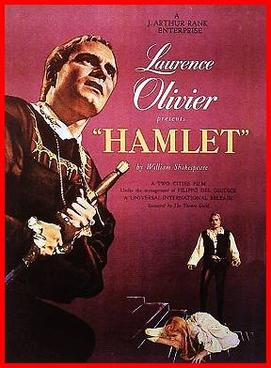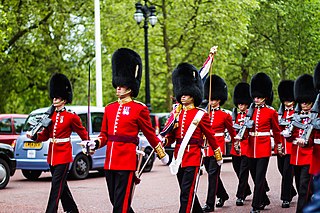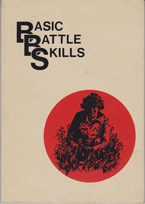Related Research Articles

Conscription is the state-mandated enlistment of people in a national service, mainly a military service. Conscription dates back to antiquity and it continues in some countries to the present day under various names. The modern system of near-universal national conscription for young men dates to the French Revolution in the 1790s, where it became the basis of a very large and powerful military. Most European nations later copied the system in peacetime, so that men at a certain age would serve 1–8 years on active duty and then transfer to the reserve force.

Leet, also known as eleet or leetspeak, is a system of modified spellings used primarily on the Internet. It often uses character replacements in ways that play on the similarity of their glyphs via reflection or other resemblance. Additionally, it modifies certain words on the basis of a system of suffixes and alternative meanings. There are many dialects or linguistic varieties in different online communities.

A password, sometimes called a passcode, is secret data, typically a string of characters, usually used to confirm a user's identity. Traditionally, passwords were expected to be memorized, but the large number of password-protected services that a typical individual accesses can make memorization of unique passwords for each service impractical. Using the terminology of the NIST Digital Identity Guidelines, the secret is held by a party called the claimant while the party verifying the identity of the claimant is called the verifier. When the claimant successfully demonstrates knowledge of the password to the verifier through an established authentication protocol, the verifier is able to infer the claimant's identity.

A salute is usually a formal hand gesture or other action used to display respect in military situations. Salutes are primarily associated with the military and law enforcement, but many civilian organizations, such as Girl Guides, Boy Scouts and the Salvation Army use formal salutes. Ordinary civilians also salute informally to greet or acknowledge the presence of another person, such as a tip of the hat or a hand wave to a friend or neighbour.

Hamlet is a 1948 British film adaptation of William Shakespeare's play of the same name, adapted and directed by and starring Laurence Olivier. Hamlet was Olivier's second film as director and the second of the three Shakespeare films that he directed. Hamlet was the first British film to win the Academy Award for Best Picture. It is the first sound film of the play in English.

A shibboleth is any custom or tradition, usually a choice of phrasing or even a single word, that distinguishes one group of people from another. Shibboleths have been used throughout history in many societies as passwords, simple ways of self-identification, signaling loyalty and affinity, maintaining traditional segregation, or protecting from real or perceived threats.

Cowardice is a trait wherein excessive fear prevents an individual from taking a risk or facing danger. It is the opposite of courage. As a label, "cowardice" indicates a failure of character in the face of a challenge. One who succumbs to cowardice is known as a coward.
In Modern English, it is a singular, neuter, third-person pronoun.
In computer security, challenge–response authentication is a family of protocols in which one party presents a question ("challenge") and another party must provide a valid answer ("response") to be authenticated.
Captain general is a high military rank of general officer grade, and a gubernatorial title.

The Battle of Stoney Creek was a British victory over an American force fought on 6 June 1813, during the War of 1812 near present-day Stoney Creek, Ontario. British units made a night attack on the American encampment, and due in large part to the capture of the two senior officers of the American force, and an overestimation of British strength by the Americans, the battle resulted in a total victory for the British, and a turning point in the defence of Upper Canada.

A garrote or garrote vil is a weapon, usually a handheld ligature of chain, rope, scarf, wire or fishing line, used to strangle a person.

The King's Guard are sentry postings at Buckingham Palace and St James's Palace, organised by the British Army's Household Division. The Household Division also mounts sentry postings at Horse Guards, known as the King's Life Guard.
Gefreiter is a German, Swiss and Austrian military rank that has existed since the 16th century. It is usually the second rank or grade to which an enlisted soldier, airman or sailor could be promoted.

A military attaché or defence attaché is a military expert who is attached to a diplomatic mission, often an embassy. This type of attaché post is normally filled by a high-ranking military officer, who retains a commission while serving with a diplomatic mission. Opportunities sometimes arise for service in the field with military forces of another sovereign state. The attache has the privileges of a foreign diplomat.
Lieutenant Albert Michael Sinclair, DSO, known as the Red Fox, was a British prisoner at Colditz Castle during World War II. He was involved in a number of escape attempts and was recognised within the camp for his determination to escape. Sinclair was the only person to be killed while attempting to escape Colditz.

Juliusz Karol Wilhelm Józef Rómmel was a Polish military commander, a general of the Polish Armed Forces.
Orders to Sentry is the official title of a set of rules governing sentry duty in the United States Armed Forces. While any guard posting has rules that may go without saying, these orders are carefully detailed and particularly stressed in the U.S. Navy, U.S. Marine Corps, and U.S. Coast Guard. Also known as the 11 General Orders, the list is meant to cover any possible scenario a sentry might encounter on duty.
Arthur D. Nicholson Jr. was a United States Army military intelligence officer shot by a Soviet sentry while engaged in intelligence-gathering activities as part of an authorized military liaison mission which operated under reciprocal U.S.–Soviet authority. Military liaison missions were ostensibly liaisons between the British, French and U.S. forces and the Group of Soviet Forces in Germany, but they had a known intelligence-gathering secondary mission and an important role to verify that offensive action was not being prepared. Reciprocal groups were authorized and operated by both the British, French and U.S. and the Soviet Union during the Cold War. Nicholson is officially regarded by the U.S. Department of Defense as having been a victim of "murder" and the final "victim" of the Cold War. Nicholson's death led to a U.S. – Soviet crisis and intense negotiations regarding the military liaison missions.

Basic Battle Skills is a field training manual formerly issued to individual soldiers in the British Army.
References
This article needs additional citations for verification .(December 2008) |
- ↑ One or more of the preceding sentences incorporates text from a publication now in the public domain : Chisholm, Hugh, ed. (1911). "Countersign". Encyclopædia Britannica . Vol. 7 (11th ed.). Cambridge University Press. p. 316.
- ↑ D-Day By Jon E. Lewis, Lord Carver, p. 40
- ↑ "Definition of THUNDER". www.merriam-webster.com. 2024-01-15. Retrieved 2024-01-16.
- ↑ Waterman, John Thomas (1991). A History of the German language: with special reference to the cultural and social forces that shaped the standard literary language (Revised ed., reissued ed.). Prospect Heights, Ill: Waveland. ISBN 978-0-88133-590-3.